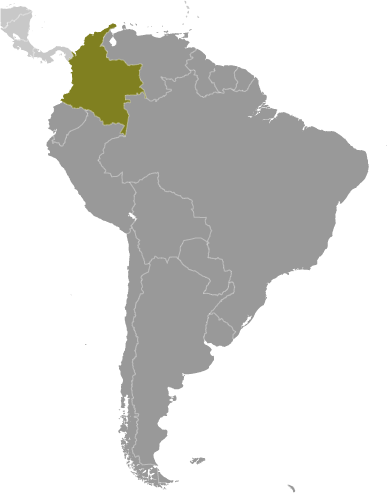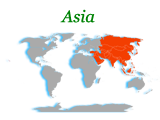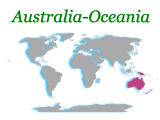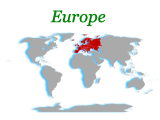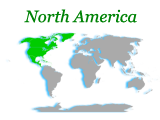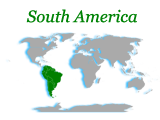Colombia was one of the three countries that emerged from the collapse of Gran Colombia in 1830 (the others are Ecuador and Venezuela). A four-decade long conflict between government forces and anti-government insurgent groups, principally the Revolutionary Armed Forces of Colombia (FARC) heavily funded by the drug trade, escalated during the 1990s. The insurgents lack the military or popular support necessary to overthrow the government and violence has been decreasing since about 2002, but insurgents continue attacks against civilians and large areas of the countryside are under guerrilla influence or are contested by security forces. More than 31,000 former paramilitaries had demobilized by the end of 2006 and the United Self Defense Forces of Colombia (AUC) as a formal organization had ceased to function. In the wake of the paramilitary demobilization, emerging criminal groups arose, whose members include some former paramilitaries. The Colombian Government has stepped up efforts to reassert government control throughout the country, and now has a presence in every one of its administrative departments. However, neighboring countries worry about the violence spilling over their borders.
Country Name
Conventional long form:Republic of Colombia
Conventional short form: Colombia
Local long form: Republica de Colombia
Local short form:Colombia
Government Type
republic; executive branch dominates government structure
Capital
Name:Bogota
Geographic coordinates:4 36 N, 74 05 W
Time difference: UTC-5 (same time as Washington, DC during Standard Time)
Administrative divisions
32 departments (departamentos, singular - departamento) and 1 capital district* (distrito capital); Amazonas, Antioquia, Arauca, Atlantico, Bogota*, Bolivar, Boyaca, Caldas, Caqueta, Casanare, Cauca, Cesar, Choco, Cordoba, Cundinamarca, Guainia, Guaviare, Huila, La Guajira, Magdalena, Meta, Narino, Norte de Santander, Putumayo, Quindio, Risaralda, San Andres y Providencia, Santander, Sucre, Tolima, Valle del Cauca, Vaupes, Vichada
Independence
20 July 1810 (from Spain)
National Holiday
Independence Day, 20 July (1810)
Constitution
5 July 1991; amended many times
Legal system
based on Spanish law; a new criminal code modeled after US procedures was enacted into law in 2004 and reached full implementation in January 2008; judicial review of executive and legislative acts; has not accepted compulsory ICJ jurisdiction
Suffrage
18 years of age; universal
Executive branch
Chief of state:President Alvaro URIBE Velez (since 7 August 2002); Vice President Francisco SANTOS Calderon (since 7 August 2002); note - the president is both the chief of state and head of government
Head of government:President Alvaro URIBE Velez (since 7 August 2002); Vice President Francisco SANTOS Calderon (since 7 August 2002)
Cabinet:Cabinet consists of a coalition of the three largest parties that supported President URIBE's reelection - the PSUN, PC, and CR - and independents
(For more information visit the World Leaders website)
Elections:president and vice president elected by popular vote for a four-year term (eligible for a second term); election last held on 28 May 2006 (next to be held on 30 May 2010)
Election results:President Alvaro URIBE Velez reelected president; percent of vote - Alvaro URIBE Velez 62%, Carlos GAVIRIA Diaz 22%, Horacio SERPA Uribe 12%, other 4%
Legislative branch
four roughly coequal, supreme judicial organs; Supreme Court of Justice or Corte Suprema de Justicia (highest court of criminal law; judges are selected by their peers from the nominees of the Superior Judicial Council for eight-year terms); Council of State (highest court of administrative law; judges are selected from the nominees of the Superior Judicial Council for eight-year terms); Constitutional Court (guards integrity and supremacy of the constitution; rules on constitutionality of laws, amendments to the constitution, and international treaties); Superior Judicial Council (administers and disciplines the civilian judiciary; resolves jurisdictional conflicts arising between other courts; members are elected by three sister courts and Congress for eight-year terms)
Judicial branch
four roughly coequal, supreme judicial organs; Supreme Court of Justice or Corte Suprema de Justicia (highest court of criminal law; judges are selected by their peers from the nominees of the Superior Judicial Council for eight-year terms); Council of State (highest court of administrative law; judges are selected from the nominees of the Superior Judicial Council for eight-year terms); Constitutional Court (guards integrity and supremacy of the constitution; rules on constitutionality of laws, amendments to the constitution, and international treaties); Superior Judicial Council (administers and disciplines the civilian judiciary; resolves jurisdictional conflicts arising between other courts; members are elected by three sister courts and Congress for eight-year terms)
Political Parties and Leaders
Alternative Democratic Pole or PDA [Jaime DUSSAN]; Colombian Conservative Party or PC [Fernando ARAUJO]; Liberal Party or PL [Rafael PARDO]; National Integration Party or PIN [leader NA]; Radical Change or CR [German VARGAS Lleras]; Social National Unity Party or U Party [Juan Manuel SANTOS]
note: Colombia has five major political parties, and numerous smaller movements
Political pressure groups and leaders
National Liberation Army or ELN; Revolutionary Armed Forces of Colombia or FARC
note: two largest insurgent groups active in Colombia
International organization participation
BCIE, CAN, Caricom (observer), CDB, FAO, G-3, G-24, G-77, IADB, IAEA, IBRD, ICAO, ICC, ICCt, ICRM, IDA, IFAD, IFC, IFRCS, IHO, ILO, IMF, IMO, IMSO, Interpol, IOC, IOM, IPU, ISO, ITSO, ITU, ITUC, LAES, LAIA, Mercosur (associate), MIGA, NAM, OAS, OPANAL, OPCW, PCA, RG, UN, UNASUR, UNCTAD, UNESCO, UNHCR, UNIDO, Union Latina, UNWTO, UPU, WCO, WFTU, WHO, WIPO, WMO, WTO
Diplomatic representation in the US
Chief of mission:Ambassador Carolina BARCO Isakson
Chancery: 2118 Leroy Place NW, Washington, DC 20008
Telephone: [1] (202) 387-8338
FAX:[1] (202) 232-8643
Consulate(s) general:Atlanta, Boston, Chicago, Houston, Los Angeles, Miami, New York, San Francisco, San Juan (Puerto Rico), Washington, DC
Diplomatic representation from the US
Chief of mission:Ambassador William R. BROWNFIELD
Embassy:Calle 24 Bis No. 48-50, Bogota, D.C.
Mailing address:Carrera 45 No. 24B-27, Bogota, D.C.
Telephone:[57] (1) 315-0811
FAX:[57] (1) 315-2197
Flag description
three horizontal bands of yellow (top, double-width), blue, and red
note: similar to the flag of Ecuador, which is longer and bears the Ecuadorian coat of arms superimposed in the center

